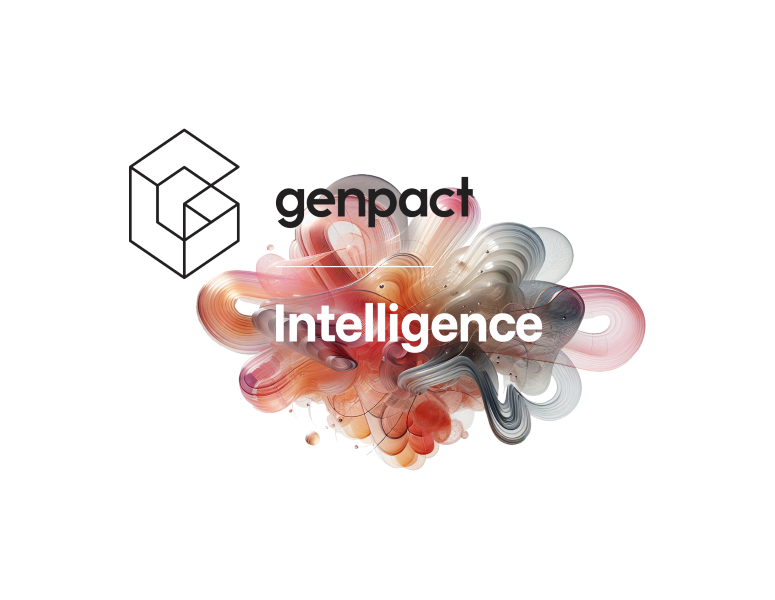Meet the industry-leading companies we partner with to scale the impact we generate for clients.
Published
How to build a solid data foundation for agentic AI
AI adoption in the financial services industry is steadily growing. From real-time fraud detection to intelligent risk modeling and insurance claims processing, the use cases are well understood and widely piloted. Yet, many enterprises are disappointed; they've invested in AI, but they're not seeing the ROI they expected. The reason why? Data that isn't AI-ready.
Data is the foundation for AI, both for the insights it provides and how it is processed and prepared to feed AI. The lack of AI-ready data is a widespread problem. In our recent survey of 200 insurance C-suite executives, 37% of respondents stated that poor data quality and availability is a significant pain point for AI, second only to uncertain ROI (38%). The disconnect is clear: AI tools are deployed, but their impact is diluted because of fragmented, static, and poor-quality data.
Why data holds agents back
With the rise of agentic AI, where autonomous agents make decisions and act without human prompts, the data problem becomes even more acute. These agents rely on real-time, contextual awareness to operate effectively, and any gaps or inconsistencies in the data landscape can lead to flawed judgments, unintended actions, and missed opportunities.
Unfortunately, most financial services firms operate in an environment where data is trapped in silos across product lines, compliance systems, and legacy platforms.
As a result, agents such as those deployed to detect fraud in real time or anticipate liquidity risks are flying blind, unable to see the full picture. Even sophisticated models are only as good as the data they're fed. Without clean, contextual, and integrated inputs, AI remains reactive, not predictive.
Transforming data for agentic AI
Data needs to be top of mind as businesses shift to becoming an agent-powered enterprise. This model doesn't just automate tasks; it reimagines workflows by embedding AI agents in a system of innovation – a layer between systems of record (like ERPs and CRMs) and systems of engagement (like apps and portals). In this model, data isn't just stored, it's acted on in real time.
For agents to act effectively, enterprises must first break down data silos and build unified data layers that ensure accessibility, consistency, and context. This means modernizing data architecture – integrating across legacy systems, standardizing formats, and applying real-time orchestration – so agents have the visibility and fidelity they need to operate autonomously and responsibly.
Take the Genpact AP Suite as an example. It uses AI agents to help transform the accounts payable process by continuously learning from structured and unstructured data across invoices, contracts, emails, and ERP systems. These agents are designed to flag anomalies, resolve exceptions, and guide decisions in real time.
The key enabler? Contextualized, connected data. The AP Suite works because it integrates data across silos, applies semantic understanding to financial documents, and leverages real-time signals to adapt and act. Without that unified, high-fidelity data environment, the agents would be limited to rote automation rather than intelligent intervention.
Now, imagine applying the same data-first approach to critical areas in financial services like customer service, know your customer (KYC), or anti-money laundering (AML). AI agents will need access to dynamic, cross-functional datasets across transaction histories, customer profiles, and regulatory thresholds to make contextual, compliant, and accurate decisions.

Data governance
Given the sensitive customer data financial services firms deal with and the regulatory landscape in which they operate, robust data governance has always been paramount.
With agentic AI, agents require not just access to data but also trusted, timely, and well-governed data to operate autonomously. This means establishing end-to-end data governance frameworks that enforce data standards, access controls, monitor drift, and support real-time accountability across functions. Without this foundation, agent decisions could erode trust, introduce new risks, amplify biases, and exacerbate discrimination.
Data priorities in financial services
The banking and financial services sector is at a pivotal moment. Legacy data infrastructure can't support the real-time, adaptive intelligence that customers, regulators, and markets now demand. Efficiency gains alone aren't enough. The path forward begins with solving the data drag.
From our work with global financial institutions, three priorities emerge.
1. Create a unified data fabric
Enterprises must integrate data across business units, platforms, and product lines into a shared architecture that supports interoperability and context. This doesn't always require ripping out legacy systems, but it does require abstraction layers, metadata management, and APIs that unify access while maintaining security and governance.
2. Invest in real-time data orchestration
Static data pipelines don't support intelligent decisioning. Financial firms need to shift from batch processing to real-time dataflows so insights, alerts, and decisions can happen as events unfold. We've seen success when clients move from point integrations to event-driven architectures powered by streaming platforms and AI-enhanced data ops.
3. Embed accountability into data governance
Data quality isn't just a tech issue; it's an organizational challenge that requires the right people and processes. We advise clients to define clear ownership models, establish data SLAs, and treat data stewardship as a core business function.
Building these foundations enables the transition to agentic AI, where autonomous systems can act on data and adapt in real time. But without a clean, connected, and well-governed data spine, even the most powerful agents will fail to deliver on their promise. Financial services institutions should view data transformation as a strategic investment to truly reap its rewards.









